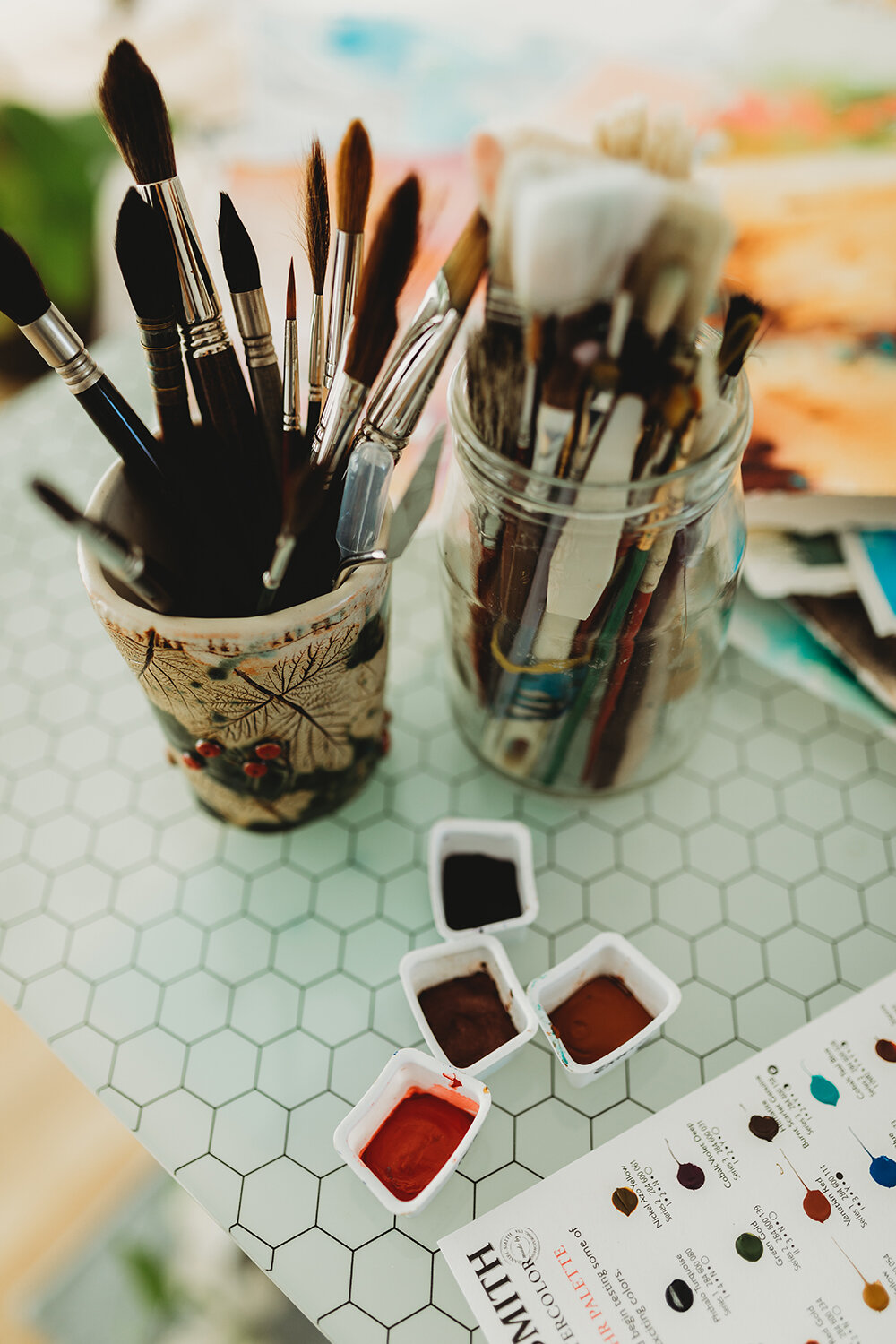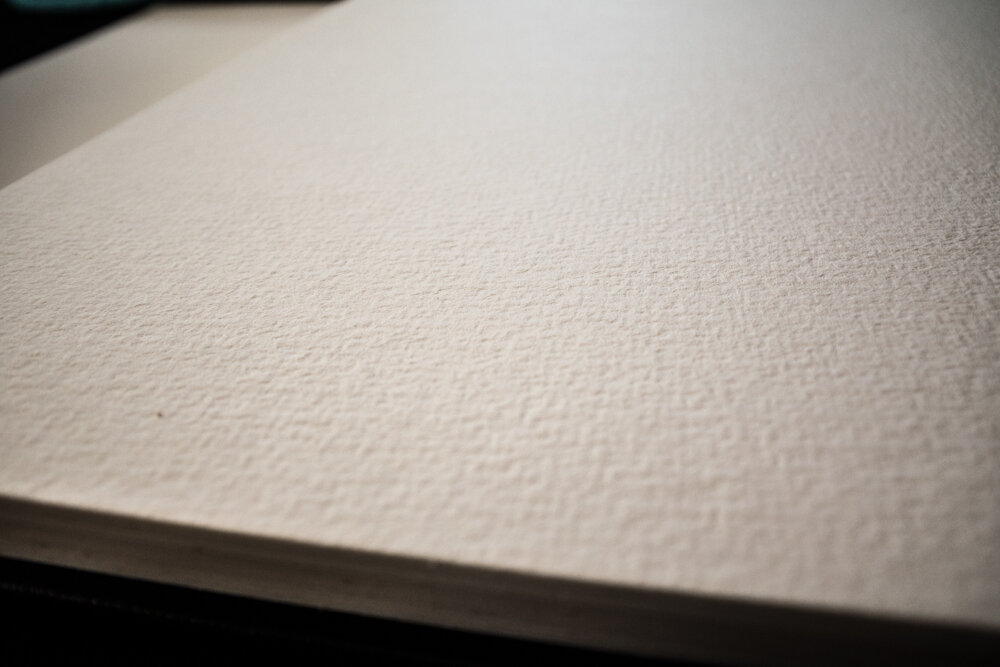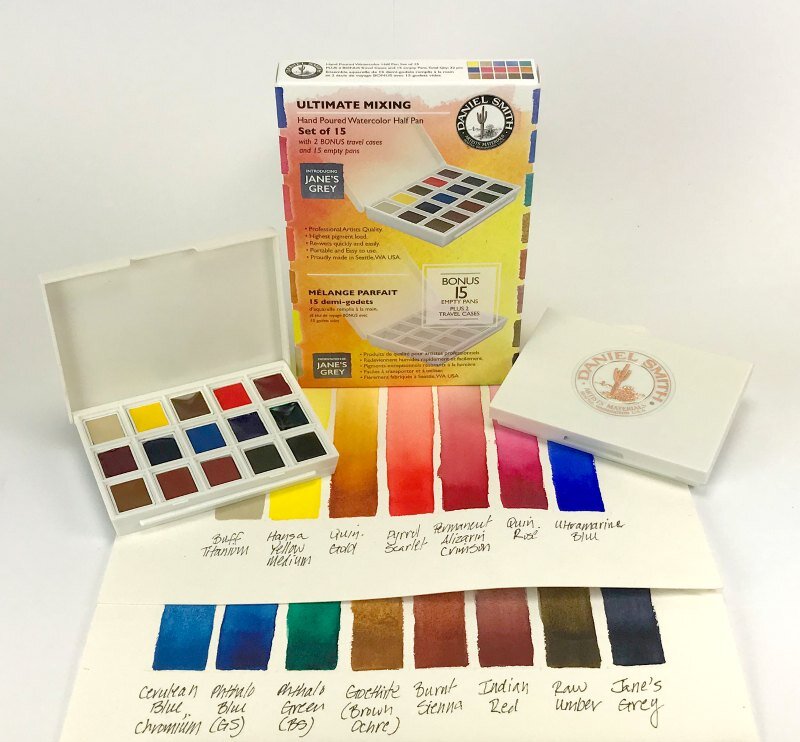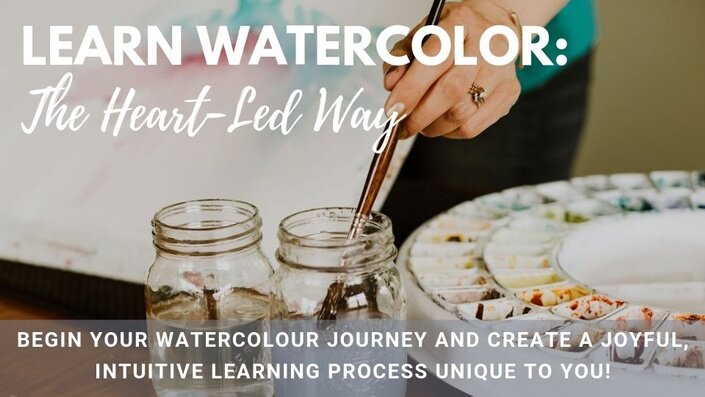The Right (and Wrong) Way to Buy Supplies for Watercolor
This post contains affiliate links.
So many choices…
If an artist wants to start painting in watercolor, they’re going to need supplies. But if you’re getting started painting in watercolor, choosing the right supplies can feel incredibly intimidating. There is so much to choose from, and so many different opinions on what the right supplies are!
Let’s start by saving you some money!
There are a few categories where you can get away with student-grade or economical supplies:
Brushes:
While it’s pretty easy to drop $100 or more on a natural hair paintbrush, most new painters want a brush that allows them to control the size and shape of their brush stroke, and one that doesn’t hold too much water, and for this purpose synthetic brushes work just fine. I like the Neptune line made by Princeton. [See them on Blick and Amazon]
Paint:
I like tube paints rather than pans as they are more economical if you’re pricing by the ounce. And no one should get their paint at big box stores in those “art sets” that cost the same as a single tube of artist quality paint! But there are some very good student grade paints that are highly saturated with great flow and not a lot of excess fillers. I like Cotman, Grumbacher, and American Journey brands for new painters. Rule of thumb: When you start to crave even more pigment load, that’s when it’s time to upgrade to artist quality. We’ll talk about what colors to choose a little further below.
Where to Splurge:
Paper:
There is no substitute for 100% cotton rag paper. (Sorry!) If you want your paint to flow and consistent results. you need to paint on great paper. You can save a little money by shopping when your paper goes on sale, and by buying your paper by the full sheet and tearing it to smaller sizes.
How to tell if your paper is good enough:
Look for “100% cotton” on the label. If it’s not on the label, it’s not cotton. Touch it, if you can. A slick surface indicates too much sizing; usually a characteristic of cheaper student-grade paper. Look for a “peach-fuzz” type of texture. (I like cold press, 140 lb or 300 gsm for paper texture and thickness for a new painter). Amazon and Blick
Cheat Sheet for Paper - Look for:
Content: 100% cotton (avoid cellulose blends)
Surface Texture: cold press, rough or hot press (smoothest) Cold press is a nice happy medium for most artists.
Thickness: 140-300 lb or 300-600gsm. The higher the number, the thicker the paper, and the less it will ripple when wet.
Paint Colors
There are literally hundreds of different colors out there for watercolor paint, and different brands name their colors in different ways. So rather than suggesting a specific color name, follow this general guide to choose colors that will mix well and give you lots of options:
Magenta, yellow, cyan: CMY color wheel. You can mix a rainbow of colors using similar colors to what you see in printer cartridges.
Then add:
a brown for neutrals
an indigo or deep blue-black for darkest darks
a leafy green
a tomato red
a purple/violet
Key to Color Success
Stick with no more than a dozen colors as you learn and really get to know them. You can add new colors slowly so you can get to know them in a gradual way as you gain confidence in which colors go well together and understand how they mix together to create exciting new hues. A great starter set is this Ultimate Mixing Set by Daniel Smith - especially designed so you can mix a wide variety of colours from just these. [Amazon]
A few other things you can gather that will help you paint:
Corrugated plastic board: “cor-plast” can be bought at hardware stores, craft supply stores or sign shops, or you can recycle old election or realtor signs for a firm, light, waterproof surface for your painting.
Masking tape: tape your paper to your painting board to hold it flat while painting.
Cheap plastic palette or an old plate to hold your paints once squeezed from the tube.
Spray bottle: To wet your palette before you start painting, rinse away paint, wet your paper. So useful!
Paper towel: For blotting wet paint, lifting out mistakes, excess water.
And always, have fun! Every brush stroke is building skills that will make you a better artist. Let those brush miles accumulate by making painting enjoyable and your skills will grow as you invest the time.
Click here to download a printable version of my recommendations here.
Learn Watercolor the Heart Led Way
I’ve changed the way I teach beginning painters how to paint, and I’d love you to join me for this series of lessons designed to help the heart-led beginning painter create a joyful, intuitive learning process. Yes, watercolor techniques will be taught, but our focus will start with the PROCESS, making painting a healing, inspiring place of self-care and acceptance. Join me to Learning Watercolor the Heart-Led Way! Click here for more details and to register.
Looking for more?
Here’s my page on Everything You Need to Know About Watercolor Supplies. I keep it updated with links & suppliers







